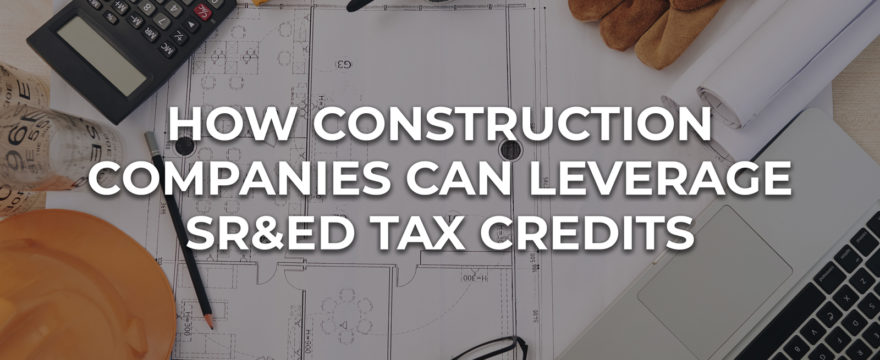
In effect since the 1980s, the SR&ED program is a federal tax incentive governed by the Canada Revenue Agency (CRA) designed to foster innovation and creative thinking. It empowers businesses to take on projects that could help increase the resiliency of their industry and make forward progress. In construction, this could mean devising safer processes, creating new materials, and exploring environmentally conscious designs. With the Canadian Construction Association (CCA) calling for investment in sustainable infrastructure, these credits can be vital to the financial health of your business while pursuing these and other endeavors. Learning how to leverage these credits will ensure your business covers the costs associated with developing our sustainable future.
Who Is Eligible for SR&ED Tax Credits in the Construction Sector?
While construction companies across Canada do innovate, many may not consider their development methods as eligible. This is especially true for construction companies that outsource innovation. If your company subcontracted this type of work to a third party, you might be able to claim their costs as SR&ED expenditures. Ensuring no two companies are claiming SR&ED expenses for the same project, the CRA thoroughly examines each claim against specific criteria.
Construction Work Qualified for SR&ED Claims
Taking the leap to create innovative solutions that address common challenges can qualify your business as eligible for reimbursement. Under subsection 248(1) of the Income Tax Act, SR&ED is defined as a “systematic investigation or search that is carried out in a field of science or technology by means of experiment or analysis.” A few of the undertakings that could qualify you for this credit include projects that aim to:
- Extend overall knowledge or capability
- Improve an existing process, material, or service
- Duplicate the effect of an existing process, material, device, or product in a novel way
Your tax refund from the CRA could be linked to salaries, subcontractor fees, and consumables. Knowing which projects qualify is the first step. Your team must establish a systemic approach to identify a need and devise a proposed solution. Examples of research and development in construction include:
- Methods to achieve certification under programs such as Leadership in Energy and Environmental Design (LEED)
- Equipment, tools, and structures that address atypical construction scenarios
- New solutions for poor ground conditions
- Adapting equipment to meet modern challenges
- Specialized systems that improve project methodology
- Proprietary methods that save valuable construction time and cost
What’s more, your refund is not outcome-dependent. The CRA strives to encourage R&D work regardless of your project’s success. This incentive program is designed to support organizations in their efforts and motivate Canadian companies to keep trying. With the proper documentation in place, your business could still be eligible for tax credits even if your attempts prove unsuccessful in the end.
Construction Work Not SR&ED Eligible
In the construction sector, many tasks and activities are considered R&D. However, some that seem like qualified R&D work are actually not. Some of the activities ineligible for your SR&ED claim include:
- Sales promotion
- Market research
- Quality control
- Routine testing of materials, devices, products, or processes
- Commercial production of your new/improved materials, devices, or products
- Routine data collection
Other exclusions may apply, as well. Construction companies should verify the eligibility of their endeavors before investing too much time and capital to avoid significant reductions in their claim.
Claiming SR&ED Expenses
The amount your construction business can claim depends on the rules in place for your province and your current tax arrangements. As a company invested in innovation, you can use the SR&ED tax incentive program to your advantage in a few ways:
- Deduct your SR&ED expenditures against your current-year income
- Save SR&ED expenditures for deduction in the future
- Earn the SR&ED Investment Tax Credit (ITC) and use it to reduce your income tax payable (in some cases, the CRA can refund the remaining ITC)
Ensure you receive the full benefit of your SR&ED claim by keeping detailed records about each project on the job site. Additionally, it’s vital to make sure your claim is received on time. The SR&ED reporting deadline is generally 12 months after the filing due date for a return, but this is dependent on the type of taxpayer. It’s important to seek guidance to ensure your claims are valid and can be filed on time to ensure your company can take advantage of this incentive.
SR&ED Financing for Innovators in Construction
Claiming SR&ED expenses and receiving a refund can take some time. Through Easly’s Capital-as-a-Service (CaaS) platform, you can access your SR&ED refund more than a year in advance. At Easly, we make tax credit financing a simple process for innovative companies.
To learn more about how we can help you finance your R&D work, contact us today.
.png)
.png)
.png)
